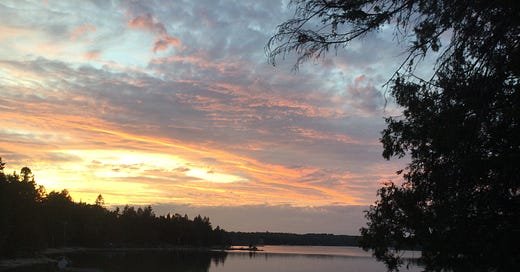Until a few weeks ago, I edited Indelible Ink, a creative nonfiction publication on Medium. My submission guidelines were no doubt longer than they should have been because I felt I needed to make clear what I meant by ‘creative nonfiction’.
It didn’t seem to matter. The majority of my submissions had nothing to do with the ‘creative’ part, and were, instead, buttoned or numbered lists (I specifically said, ‘no lists’) or lectures and lessons (I specifically said no lectures, no lessons), or straight reporting. (I specifically said…)
When one persistent writer wouldn’t give up, no matter how many times I rejected her work because I couldn’t find the ‘creative’ part, she asked me to tell her specifically what creative nonfiction was.
I almost didn’t answer. Not in the way she would like. I wasn’t sure I could, to be honest. I lived by the rule that I’ll know it when I see it.
The dictionary definition of non-fiction is: ‘prose writing that is based on facts, real events, and real people, such as biography or history.’ There is no short dictionary definition for Creative Nonfiction.
The good news is there’s such as thing as an MFA in Creative Nonfiction—if you really want to go that deep. The equally good news is you don’t have to have one in order to discover the joys and rewards of writing nonfiction creatively.
Purdue University has a good overview of CNF, designed to introduce their students to the process. It’s worth reading if creative nonfiction is where you want to go.
This is just one paragraph, my emphasis:
Creative Nonfiction encompasses many different forms of prose. As an emerging form, CNF is closely entwined with fiction. Many fiction writers make the cross-over to nonfiction occasionally, if only to write essays on the craft of fiction. This can be done fairly easily, since the ability to write good prose — beautiful description, realistic characters, musical sentences — is required in both genres.
My own take: Creative Non-fiction appeals to the heart, to emotions, and tells a compelling story designed to make the reader feel something. There’s a passion to it. It’s usually told in First Person and is written in a conversational tone, as if you were talking to a group of friends and not standing on a podium delivering a speech.
The word “Creative” tells you that it’s different from ordinary non-fiction. The writer comes through as a personality and isn’t hidden from the essay. No matter what the Creative Nonfiction writer writes, a part of them shines through, and, if they do it well, the reader comes away appreciating the writer as well as the story.
CNF writers understand that no matter what they write, they have to be in there. It doesn’t have to be about them it only has to reflect their personality. Whether it’s politics or activism or reminiscences or humor or first world problems, the reader will know it all comes from the feelings of that particular writer.
The CNF writer insists the readers become involved in their story. That takes a special kind of talent, and it requires a kind of bravery.
It means you have to open yourself up to your audience in ways you’re not used to if your background is straight nonfiction. Our hearts have to be in it, and, since our natural inclination is to protect our hearts, it’s not easy to lay it all out there to an audience that may or may not be receptive.
But this is what makes CNF special and why not everyone is successful at it. When it’s done well, it soars, it inspires, it makes us laugh or cry or think or take action. It’s what turns non-fiction into art.
What do you think? Let’s talk about this. Get creative!




So, this was a very interesting read. I guess I have been writing creative nonfiction for my whole essay life. Though I can point to some pieces that feel more creative than others. Would you consider your post itself to be CNF?
You nailed the 'creative' non-fiction with your sleuthy way of sliding us over to your substack website. Off topic, but can you share the method behind the madness? 2 posts, one the excerpt with the link and the second the 'real deal'?? Will you remove the trailer post? I'm so confused ... but also anxious to be a mimic!